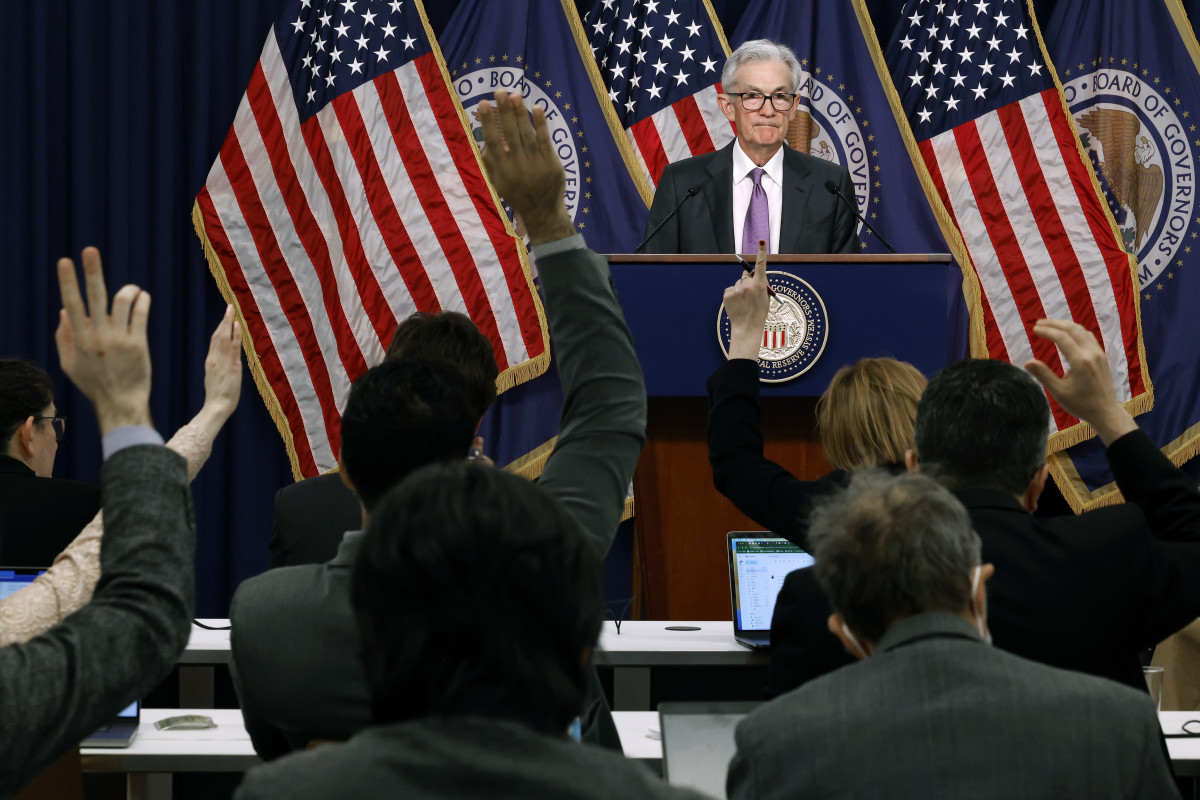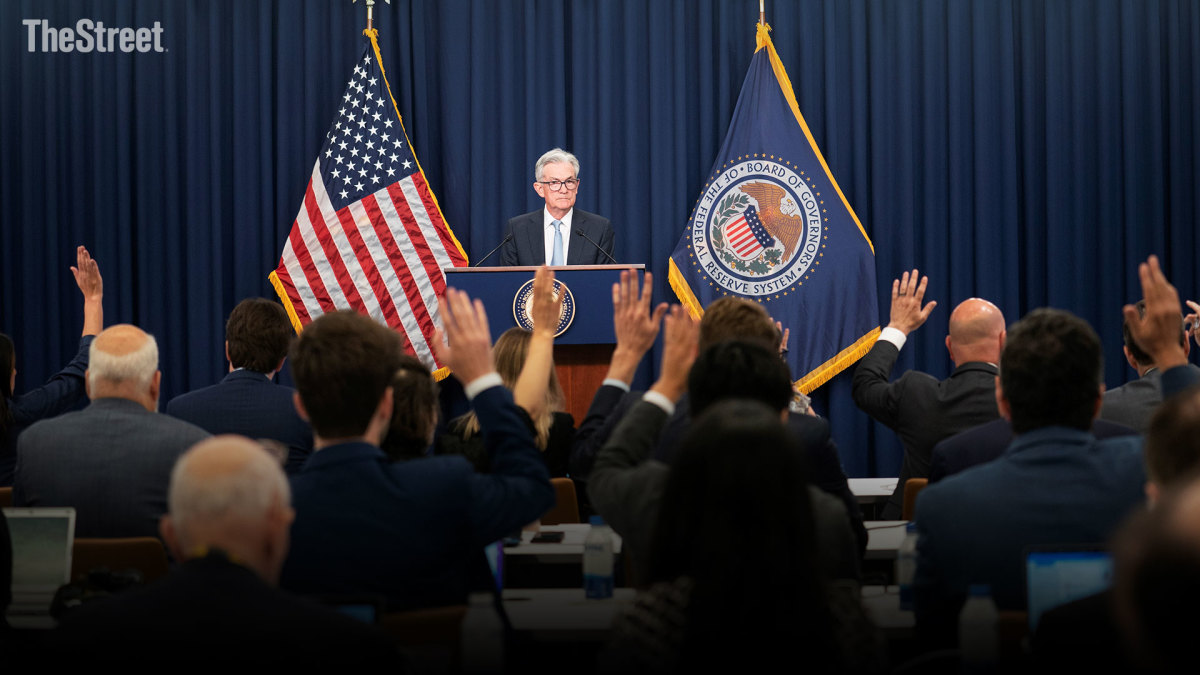
The Federal Reserve has pulled off one of the biggest monetary policy surprises in decades, thanks in part to the lessons it learned from an earlier communications error, and it looks set to deliver on perhaps its most difficult challenge.
But while some would think this refers to the central bank's chances of executing a so-called soft landing for the world's biggest economy, where inflation is tamed without triggering a recession, the Fed's greater accomplishment is actually even more difficult.
It has slowly convinced markets to align with its interest-rate-cut forecasts while quietly touting the strength of the underlying economy. That's enabled investors to focus on growth and profits over policy, and it has helped power stocks to their best back-to-back quarterly performance in more than a decade.
Friday's PCE inflation report is a great example of the Fed's messaging, which has preached patience as the central bank brings price gains back to its 2% target while reminding investors that its aggressive 2022 rate hikes haven't pounded the economy into submission.

Liu Jie/Xinhua via Getty Images
The Fed's preferred inflation gauge cooled modestly last month, with the closely tracked core reading easing to 2.8%, even as consumer spending popped by nearly twice the level of Wall Street forecasts.
A patient Fed and surging markets
The PCE reading followed an upwardly revised tally for fourth-quarter GDP, which showed an improved growth rate of 3.4% and inflation pressures that held very close to the Fed's 2% over the final six months of last year.
Jeffery Roach, chief economist for LPL Financial in Charlotte, says the broader spending trend is still weakening. He notes the decline in personal income, but adds that "where we sit today, markets need to have the same patience the Fed is exhibiting."
Related: What's next for the S&P 500 after its best run since 2011
Still, if consumers are spending, inflation is slowing, and the economy is growing, Fed rate forecasts might not matter so much, and the market's obsession with the central bank's messaging to derive its next move will quickly begin to fade.
We've seen evidence of that already, with the S&P 500 rising to a record 5,254.35 on Thursday to close out a quarterly gain of 10.16%, the best first-quarter advance in five years.
The benchmark's advance came amid another call for patience on rates from Federal Reserve Gov. Christopher Waller earlier this week and Fed Chairman Jerome Powell's similarly cautious remarks earlier this month.
Fed's past errors haunt policy
"We’re in a situation where if we ease too much or too soon, we could see inflation come back, and if we ease too late, we could do unnecessary harm to employment and people’s working lives," Powell told reporters in Washington following the Fed's last policy meeting.
"We want to be careful," he added. "And fortunately, with the economy growing, with the labor market strong, and with inflation coming down, we can approach that question carefully and let the data speak on that."
The Fed's tone likely reflects the criticism it faced in declaring post-covid inflation pressures "transitory" in early 2021.
Related: Fed hints at bank stock risk from repo market meltdown redux
With the Fed having made that prognosis and repeating it through much of that summer, inflation ultimately accelerated faster than anyone expected and peaked at an annualized rate of 9.1% in summer 2022.
The S&P 500's gains this year have also defined a notable rise in Treasury bond yields, which have adjusted to the Fed's efforts to align markets to its forecast of three rate cuts this year as well as a heftier slate of issuance to fund the government's fiscal ambitions.
Benchmark 10-year Treasury note yields have risen more than 34 basis points (0.34 percentage points) this year, ending the quarter at 4.204%, while 2-year notes gained 37.8 basis points over the same period to 4.628%.
"Another way of looking at the 10-year Treasury yield surge is to consider it a sign of increasing investor confidence," said Trading.biz analyst Rahul Nambiampurath, as investors exit fixed-income investments into riskier assets with higher returns.
It's the economy, stupid
That likely means investors are starting to believe in a U.S. growth story that has lost some of its late-2023 steam but is still on pace to continue adding jobs and power consumer spending as it avoids recession and adds further distance between itself and the rest of the world's major economies.
Ian Shepherdson of Pantheon Macroeconomics notes that spending on services, the most important growth component, has accelerated to 4.5% over the past three months, the fastest since the post-COVID rebound in 2021.
Any gains in March, he suggests, will bring upward revisions to first-quarter GDP forecasts, which the Atlanta Fed currently pegs at around 2.1%.
Related: The Fed rate decision won't surprise markets. What happens next might
Corporate profits, powered partly by consumers who aren't worried about their jobs and are happy to dip into post-pandemic savings, also carry some solid momentum into the start of the year.
Bill Adams, chief economist for Comerica Bank in Dallas, notes that stripping out losses at the Fed (tied to its $7.7 trillion balance sheet), which are included in the Bureau of Economic Analysis's data, corporate profits rose at an annualized rate of 5.9% over the final three months of last year.
Rate cuts 'welcome but not needed'
Looking into 2024, Wall Street forecasters see collective S&P 500 profits rising just under 10%, around double the 2023 figure, to an overall average of $243 a share.
"The stock market performed extremely well during the first quarter of 2024, and as long as earnings remain strong, the market can continue to move higher," said Jeremy Straub, chief executive and chief investment officer at Coastal Wealth in Fort Lauderdale, Fla.
More Economy:
- Bond markets tell Fed rate story that stocks still ignore
- February inflation surprises with modest uptick, but core pressures ease
- Vanguard unveils bold interest rate forecast ahead of Fed meeting
"While rate cuts from the Fed would be welcome news for stocks, they are not a requirement for a strong market, which has been able to rally for the past 18 months even with high interest rates," he added. "We believe stock investors are adjusting to this new normal of higher interest rates."
So, with bonds likely focused on supply metrics and closely tracking the levels of foreign demand in benchmark auctions and stocks keying on earnings and profit margins, we may be seeing the Fed's influence fade quietly into the background.
Related: Veteran fund manager picks favorite stocks for 2024







